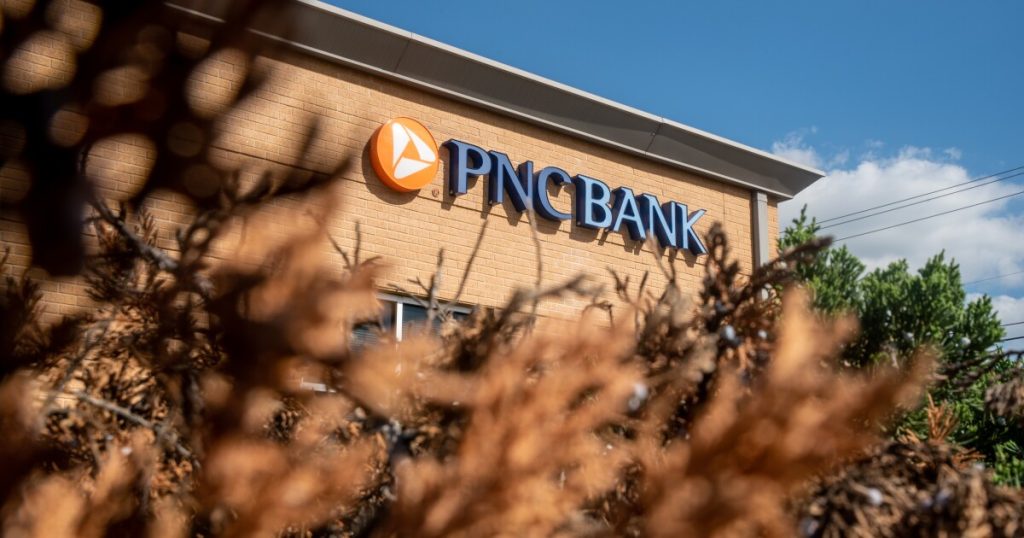Efforts under the Trump administration to roll back certain regulations and engage with the industry in less confrontational ways will be an opportunity for banks, but it’s unclear just how much benefit they’ll see.
In this shifting compliance landscape, Amy Wierenga is picking up the chief risk officer title at
Wierenga said in a recent interview that the changes in Washington are providing opportunities for the $559 billion-asset PNC to “reallocate resources” in its risk-management unit.
“Unfortunately, through the years, the emphasis on some of these more non-financial, non-safety-and-soundness areas — which are important for us to talk about together — has created an administrative burden that has actually taken resources away from what I see as the core way that the risk-management organization can help drive better outcomes for our clients and ensure the safety and soundness of our balance sheet,” Wierenga told American Banker.
Certain regulatory processes “cannibalize” resources that Wierenga thinks could be used for what she called “active, hands-on” risk management. Those processes — which don’t include areas like the Bank Secrecy Act, fraud, financial crime and legal regulatory compliance — are mostly focused on operational risk.
According to the Bank Policy Institute, a trade group that represents big banks in the U.S., the portion of bank information-technology budgets devoted to compliance grew from 9.6% in 2016 to 13.4% in 2023.
The amount of time that bank executives spent on regulatory and supervisory compliance also went up. In 2016, 27% of C-suite time was focused on complying with laws, regulations and mandates. In 2023, that figure was 43%, according to BPI. (BPI’s definitions of “regulatory and supervisory compliance” and “risk management were distinct. The latter referred to “risk management in the ordinary course unrelated to prudential regulatory or supervisory requirements.”)
The administrative burden, Wierenga said, has come when regulators have required detailed remediation plans with specific steps, committees and working groups to enhance a skill or activity, which the bank has often already identified as an area to improve.
Dialogue between the bank and regulators is a more efficient, effective solution, Wierenga contended. She said that eliminating auditable processes frees up time and resources.
She declined to offer specific metrics to quantify the reallocation of resources that PNC could see as a result of deregulation.
Since President Donald Trump took office, regulators have made moves to roll back compliance requirements related to areas like capital levels, reputation risk, resolution plans and customer identification. Additionally, the Consumer Financial Protection Bureau has been stripped down, a stablecoin-friendly law has been passed and signed into law, and examiner positions across the prudential regulators have been slashed.
PNC Chairman and CEO Bill Demchak has been vocal in calling out regulations he sees as onerous. During PNC’s second-quarter earnings call in July, Demchak said that the current environment is a tailwind for the Pittsburgh-based bank and its growth ambitions.
“You’ll see that not just in some of the capital ratios and adjustments in Basel III endgame and so on and so forth, but also I think through time and the amount of money we actually spend on what I’m just going to call ‘busy work,'” Demchak said. “Responding to regulatory things that don’t necessarily have a lot to do with core risk in the bank. But all of that helps at the margin.”
Wierenga said that conversations with regulators about operational risks help her to compare PNC’s capabilities with those of peers. Eliminating suggestions from regulators isn’t what PNC is advocating, she said.
“I see having the right people in the right rooms having the right conversations as the best, if not the only way, to achieve the type of strong risk culture and strong risk-management outcomes that both we and the regulators want,” Wierenga said.
But even as banks will get some leeway to trim processes here and there, analysts don’t expect the impact of deregulation to reduce costs materially. As Demchak noted in July, regulatory environments have swung back and forth between administrations.
Brian Graham, a partner at the bank consulting firm Klaros Group, said that banks have certain processes that are substantive and others that are more performative, meaning they’re required by regulators, but aren’t as important to risk management. Some requests from regulators to enhance certain areas of the bank are heavy lifts administratively, he said.
“What they often do instead is say, ‘We think you need better processes and procedures and policies,'” Graham said. “Those are designed to put pressure on the things that the supervisor is actually substantively concerned about, but they’re expressed in a very process-oriented way.”
Banks will have opportunities to trim down the more “performative” processes, but they are unlikely to make major changes to the substantive work, Graham said.
Clifford Rossi, director of the Smith Enterprise Risk Consortium at the University of Maryland, said that big banks, especially, will be mindful of the ebb and flow of bank regulation between administrations.
“They’ll go through that sizing on an internal basis and come to some conclusion as to how they can take advantage of that,” said Rossi, a former chief risk officer for Citigroup’s consumer group. “But I don’t believe we’re going to see a huge amount of redeployment or shrinking of those organizations because if they’re smart, they’re going to realize that they may very well need them in the future.”

